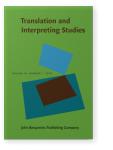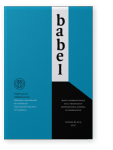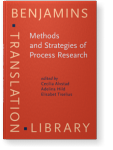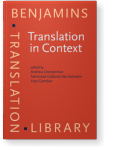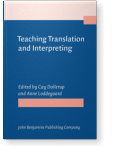Brian Mossop
List of John Benjamins publications for which Brian Mossop plays a role.
2024 Do machines and humans translate in the same sense? Translation Spaces: Online-First Articles | Article
Human and machine translation share several features, one of which is actions that are not motivated by meaning. In addition, the human process often consists initially in the semi-conscious production of literal translations that are only weakly motivated by meaning. A definition of the… read more
2021 Maze-walkers and echoborgs: Reflections on translator metaphors Translation Spaces 10:2, pp. 329–348 | Article
The article fills a gap in the existing array of translation metaphors by introducing maze-walkers as a metaphor for translators at work. Ten similarities and five dissimilarities between translating and walking through a hedge maze are discussed. Translators’ control over their actions is… read more
2019 ‘Intersemiotic translating’: Time for a rethink? Translation and Interpreting Studies 14:1, pp. 75–94 | Article
Should transpositions between language and other sign systems be considered a kind of translation? The answer could be yes if the comparison is made to interlingual translating that features a high degree of variance. Here, however, the question will be whether there are any kinds of… read more
2017 When translation is not about meaning Babel 63:5, pp. 621–642 | Article
Translation is typically thought of as conveying the meaning of a text written in another language. However translators frequently engage in operations that do not start from textual meaning but from phonetic form, typographic form or some other formal feature of a text. In this article, I look… read more
2011 Seeing translation from inside the translator’s mind Methods and Strategies of Process Research: Integrative approaches in Translation Studies, Alvstad, Cecilia, Adelina Hild and Elisabet Tiselius (eds.), pp. 57–66 | Article
A method is suggested whereby translators can state their beliefs about the meaning of the source text and their intentions about the wording of the translation. The method involves inserting items from a vocabulary into the translation as it is produced. The vocabulary consists of descriptors for… read more
2011 Revision Handbook of Translation Studies: Volume 2, Gambier, Yves and Luc van Doorslaer (eds.), pp. 135–139 | Article
2005 Pym, Anthony. 2004. The moving text: Localization, translation, and distribution Target 17:2, pp. 363–369 | Review
2001 Why should we seek common ground? Target 13:1, pp. 158–160 | Discussion
2000 The workplace procedures of professional translators Translation in Context: Selected papers from the EST Congress, Granada 1998, Chesterman, Andrew, Natividad Gallardo San Salvador and Yves Gambier (eds.), pp. 39–48 | Article
1998 What Is a Translating Translator Doing? Target 10:2, pp. 231–266 | Article
Translating is here defined as the quoting, in sequential chunks, of the wording of a written, oral or signed text, with an imitative purpose. These features distinguish it from other sorts of language activity—intralingual paraphrasing, re-expressing of ideas, fictive quoting, speaking from a… read more
1994 Goals and methods for a course in translation theory Translation Studies: An Interdiscipline: Selected papers from the Translation Studies Congress, Vienna, 1992, Snell-Hornby, Mary, Franz Pöchhacker and Klaus Kaindl (eds.), pp. 401–410 | Article
1992 Goals of a revision course Teaching Translation and Interpreting: Training Talent and Experience. Papers from the First Language International Conference, Elsinore, Denmark, 1991, Dollerup, Cay and Anne Loddegaard (eds.), pp. 81–92 | Chapter

